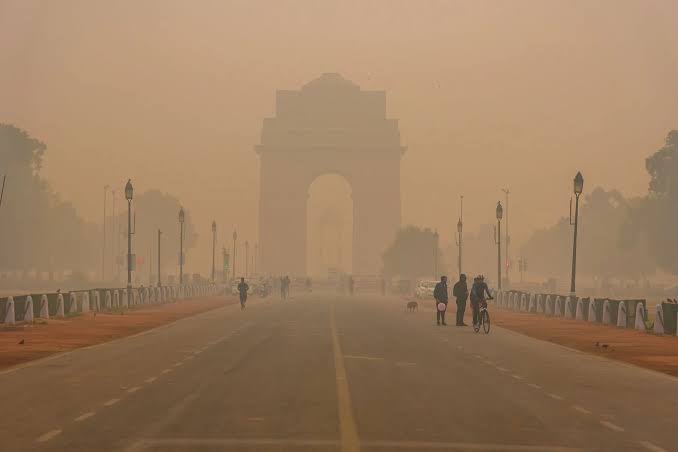Delhi Pollution: Causes, Effects, and Solutions
Introduction
Delhi, India’s bustling capital, is famous for its vibrant culture, historical landmarks, and rich heritage. But today, it’s equally infamous for something far less desirable—pollution. Over the years, Delhi has earned the unfortunate title of being one of the most polluted cities in the world.
Why is Delhi’s air so toxic? What are the impacts of this pollution? And more importantly, what can we do to make a difference? In this blog post, we’ll dive deep into these questions and explore practical ways to combat Delhi’s pollution problem.
Table of Contents
- What is Delhi Pollution?
- Major Causes of Delhi Pollution
- Vehicular Emissions
- Industrial Activities
- Construction Dust
- Burning of Crop Residue (Stubble Burning)
- Effects of Delhi Pollution on Health and Environment
- Measures to Reduce Pollution in Delhi
- Government Policies
- Individual Actions
- Conclusion
- FAQs about Delhi Pollution
What is Delhi Pollution?
Delhi pollution refers to the severe degradation of air quality in the city, primarily caused by human activities. Every year, especially during winter, Delhi’s air quality dips to hazardous levels, blanketing the city in a thick, gray smog. This smog isn’t just an inconvenience—it’s a silent killer, affecting millions of lives.
Major Causes of Delhi Pollution
Let’s break down the main culprits behind Delhi’s alarming pollution levels:
1. Vehicular Emissions
With over 11 million vehicles on its roads, Delhi is drowning in car exhaust. Vehicles running on petrol and diesel emit harmful gases like carbon monoxide, nitrogen oxides, and particulate matter, which contribute significantly to air pollution.
2. Industrial Activities
Delhi’s surrounding areas are home to numerous factories and industries. These emit toxic pollutants like sulfur dioxide and fine particulate matter into the atmosphere, further worsening the air quality.
3. Construction Dust
Delhi is always under construction—whether it’s roads, metro lines, or buildings. The dust from these activities releases particulate matter into the air, making it hard to breathe.
4. Burning of Crop Residue (Stubble Burning)
Every winter, farmers in neighboring states like Punjab and Haryana burn crop residue to clear their fields. The smoke from this stubble burning drifts into Delhi, turning its air toxic and visibility poor.
Effects of Delhi Pollution on Health and Environment
Delhi’s pollution isn’t just bad for the lungs; it’s bad for life in general. Here’s how:
- Health Impacts: Prolonged exposure to polluted air can cause respiratory problems, asthma, heart diseases, and even cancer. Children and the elderly are especially vulnerable.
- Environmental Damage: Pollution harms vegetation, reduces visibility, and contributes to climate change. It also affects Delhi’s iconic monuments, like the Taj Mahal, which are slowly losing their shine due to acid rain.
- Daily Inconvenience: From reduced visibility during winters to health-related absenteeism, pollution disrupts everyday life in Delhi.
Measures to Reduce Pollution in Delhi
While the situation seems dire, there’s hope. With a combined effort from the government and citizens, we can bring change.
Government Policies
- Odd-Even Rule: The Delhi government periodically implements this scheme, where odd and even-numbered vehicles alternate on the roads.
- Ban on Firecrackers: To curb pollution during festivals like Diwali, firecracker sales and use have been restricted.
- Promotion of Electric Vehicles (EVs): Subsidies and incentives are encouraging people to switch to EVs.
Individual Actions
- Use Public Transport: Avoid driving solo; take the metro, bus, or carpool.
- Plant Trees: Trees act as natural air purifiers. Planting more trees in your locality can help reduce air pollution.
- Say No to Burning Waste: Avoid burning leaves or garbage. Instead, compost organic waste.
- Use Energy Wisely: Switch to solar energy, use energy-efficient appliances, and minimize electricity usage.
Conclusion
Delhi’s pollution crisis is not just a city problem; it’s a collective challenge for all of us. The key to cleaner air lies in awareness, responsibility, and action. By making conscious choices and supporting eco-friendly initiatives, we can pave the way for a healthier, greener Delhi.
FAQs about Delhi Pollution
1. Why is Delhi so polluted during winter?
In winter, pollutants get trapped closer to the ground due to temperature inversion. Coupled with stubble burning and reduced wind speed, this leads to severe smog.
2. What is AQI, and why is it important?
AQI stands for Air Quality Index, which measures the level of pollution in the air. A high AQI indicates unhealthy air conditions.
3. How can individuals contribute to reducing pollution in Delhi?
You can reduce pollution by using public transport, avoiding firecrackers, conserving energy, and supporting green initiatives.
4. Is Delhi the most polluted city in the world?
While Delhi often ranks among the most polluted cities, it varies depending on the time of year and specific AQI levels.
5. What are some long-term solutions for Delhi pollution?
Long-term solutions include stricter emission norms, promoting renewable energy, better waste management, and increasing green cover.
By taking small but meaningful steps, we can ensure a cleaner future for Delhi—and for generations to come.



